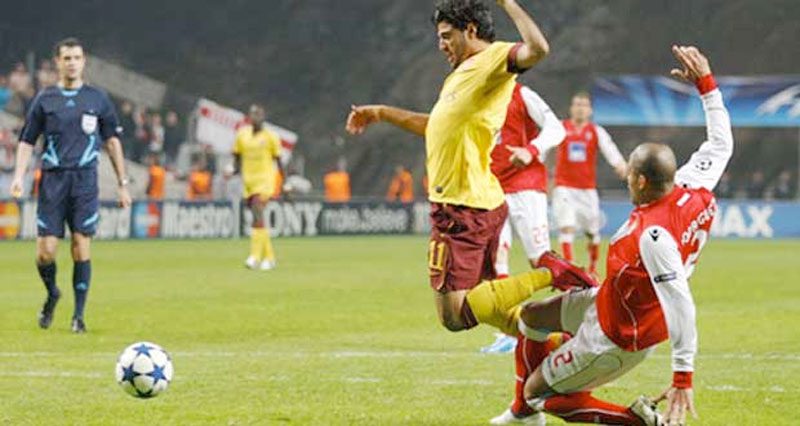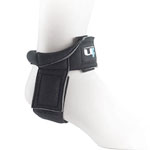Football/Soccer injuries are a common part of the game. Most are sudden onset (acute), although overuse injuries also occur. Here we outline the most common Football injuries and how to treat and prevent them.
Acute football/soccer injuries
Acute soccer injuries occur suddenly and include sprains, strains and fractures. Torn ligaments and broken bones are usually caused by contact with other players. Muscle and tendon strains are more often sprint or kicking-related.
Hamstring strain
Hamstring strain commonly known as a pulled hamstring is sudden sharp pain at the back of the thigh. Treatment for this injury involves immediate first aid of rest, ice, and compression followed by a full rehabilitation and exercise program. Symptoms of a hamstring strain include pains whilst sprinting or a fast stretching movement or a high kick. Read more on the treatment of hamstring strains.
Sprained ankle
A sprained ankle is one of the most common sports injuries and is also the most frequently re-injured. In the majority of cases, the ankle rolls inwards (inversion) under the weight of the rest of the body, resulting in damage to the ligaments on the outside of the ankle. Pain is usually felt around the ankle joint itself although more specifically on the outside of the ankle where the damaged ligaments are located.
Read more on how to treat a sprained ankle.
Read more on Ankle supports for football
Achilles tendonitis
Achilles tendonitis (also known as Achilles tendinopathy or Achilles tendinosis) is an overuse injury causing pain, inflammation and or degeneration of the Achilles tendon at the back of the ankle. If this type of injury is not caught early this can be difficult to cure but with the right treatment and particularly eccentric strengthening exercises, a full recovery can usually be achieved. Read more on the treatment and rehabilitation of Achilles tendonitis.
Medial knee ligament sprain
Medial ligament sprain or MCL injury is a tear of the ligament on the inside of the knee, it is usually a result of direct impact or twisting motion. A medial ligament injury is common in contact sports such as football and rugby, as well as martial arts. They can also occur in daily life through falls and twists of the knee joint. Read more on the treatment and rehabilitation of medial ligament sprain.
Chronic soccer injuries
Chronic injuries occur over time and are usually related to overuse. In particular, young footballers often suffer from overuse injuries.
Jumper’s knee
Jumper’s knee or patellar tendonitis is an overuse injury that results in pain at the front of the knee, localised at a point towards the bottom of the kneecap. Repetitive strain from too much running or jumping causes inflammation or degeneration of the patella tendon. Patellar tendonitis can be a tricky condition to treat and requires a substantial period of rest and a thorough treatment and rehabilitation program. Read more on the causes and treatment of Jumper’s knee.
Shin splints
Pain at the front of the lower leg is commonly referred to as shin splints. Usually, symptoms occur at the front inside of the shin bone but can arise from a number of causes. We explain the symptoms, treatment, and rehabilitation of medial tibial stress syndrome to cure and prevent it from recurring. Read more on how to prevent and treat shin splints.
Metatarsal stress fractures
A metatarsal stress fracture is a fine fracture in one of the long metatarsal bones in the foot. A stress fracture can occur through overuse or poor foot biomechanics. Symptoms include pain in the foot which occurs gradually. The pain will be located towards the middle or front of the foot and is made worse by weight-bearing activities such as walking, running or dancing. Read more on metatarsal stress fractures.
Immediate first aid for acute football/soccer injuries
The PRICE principles are the gold standard set for treating acute sports injuries. The acronym stands for Protection, Rest, Ice, Compression and Elevation and should be applied as early as possible and continued for at least the first 24-72 hours.
Read more on PRICE principles.
Should I seek professional treatment for my soccer injury?
If you have any of the following symptoms you should seek further medical assistance.
- Severe pain, especially on walking
- Severe swelling (oedema)
- Altered sensation in the foot – such as a feeling of “pins and needles” (paresthesia) or a “loss of feeling” (anaesthesia).
- Unable to complete normal daily activities after the initial 72 hours.
Further medical assistance can be sought through either your local GP or a private clinician such as a podiatrist, physiotherapist, sports therapist, osteopath or chiropractor. If you have followed the P.R.I.C.E. principles (see below) and are still unable to walk after 72 hours or still have severe pain that is not subsiding after the first 72 hours you should visit your local A&E department for further assessment.
Secondly, if you have applied for P.R.I.C.E. principles and still have weakness that lasts a long time (more than 2 weeks) or have ongoing discomfort in your foot or heel, you are highly recommended to seek advice from a specialist expert – such as a podiatrist or physiotherapist, osteopath, or chiropractor – who can provide you with advice and an appropriate and effective recovery and rehabilitation program.
Read more on preventing football injuries.
Related research papers
Hamstring Injuries In Professional Football
The study aimed to conduct a detailed analysis of hamstring injuries in English professional football over two seasons. Injury data from 91 professional football clubs were collected using an injury audit questionnaire and a weekly…
Health Problems in Women’s Football
A study at the Oslo Sports Trauma Research Center looked at illness, sudden-onset and gradual-onset injuries among players in the Norwegian women’s premier league during the 2020 and 2021 seasons. It concluded that 32% reported…









